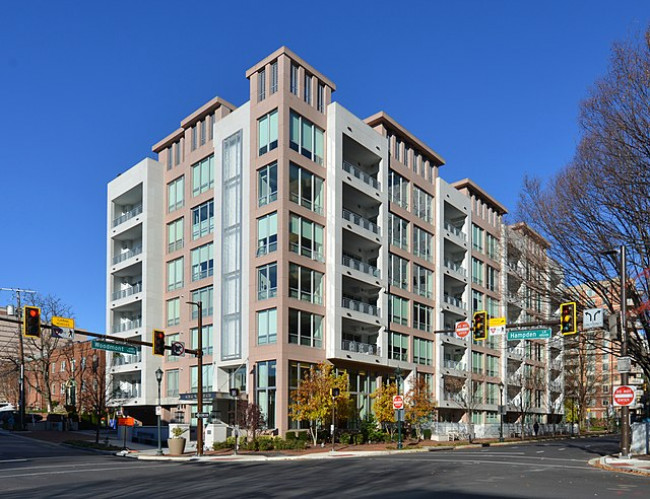It might seem obvious enough that if you have a swimming pool at home, you will want it to be comfortable, safe, and healthy for every member of your household to swim in. However, in order to achieve this, you will need to take every necessary step to ensure optimal water balance in your pool.
What do we mean by ‘water balance’ in swimming pools?
When sources such as our own online store for swimming pool chemicals refer to “water balance”, they are referring to the practice of keeping the pH, total alkalinity, calcium hardness, and total dissolved solids in the water at the proper levels.
Your pool’s pH level falling too low or too high could have serious consequences
The most critically important element of swimming pool water chemistry is pH, given the profound impact it has on every other chemical balance in the water. The 14-point pH scale – from zero for strong acid, right through to 14 for strong alkaline – allows for easy understanding of this aspect of pool chemistry.
Although it might seem logical to aim for a pH neutral level – in other words, 7 on the aforementioned scale – when you are trying to optimise your pool water balance, it is actually a slightly alkaline level, of 7.2 to 7.6, that is ideal.
Major risks can arise when pH is either too high or too low:
· A pH level of below seven indicates especially acidic water. It is a level at which the eyes and skin become irritated, and the heater element and other metal fittings on the pool may corrode. Stains may be left on the walls due to dissolved metals, and the liner is likely to become wrinkled.
· A pH level of more than eight indicates water with particularly high alkalinity. This pH level, too, can irritate the skin and eyes, and you will likely notice such visual signs as cloudy pool water and the walls becoming discoloured. Chlorine activity also won’t be as fast and efficient as it would be at a more balanced level, and the filter may become overworked – perhaps even choked.
But the pH level itself isn’t the only factor you need to be concerned with
Such is the complexity of the task of maintaining good overall water balance in your pool, there are other aspects that you will need to be well-informed about.
One such aspect is total alkalinity (TA), which effectively measures the resistance of water to change in pH. The level of TA that pool owners should be aiming at is between 80 and 140 parts per million (ppm).
An overly low TA level will mean that pool pH is unstable and difficult to maintain, being prone to change rapidly when chemicals or impurities are introduced to the water. If, on the other hand, the TA is too high, it will be difficult to adjust the pH level in the pool.
Then, there is the matter of water hardness, which relates to the amount of dissolved calcium in the pool water. Overly high water hardness levels will lead to scale formation, whereas if they are too low, the pool surfaces and equipment will inevitably corrode.
A proactive and diligent approach to swimming pool water chemistry is crucial
To return to the question we posed at the top of the article, then, if you fail to maintain swimming pool water balance, various adverse effects will typically occur. These will bring serious consequences for not only the condition and longevity of your pool, but also how healthy and safe it is to actually enter the water.
These risks underscore why, here at Pool Warehouse, we are dedicated to stocking a complete selection of swimming pool chemicals to help ensure your pool’s water balance remains “just right”. Why not browse our online store today to discover our excellent prices on pool chlorine, algaecides, stain removers, alkalinity increaser, and so many other essential chemicals?
It might seem obvious enough that if you have a swimming pool at home, you will want it to be comfortable, safe, and healthy for every member of your household to swim in. However, in order to achieve this, you will need to take every necessary step to ensure optimal water balance in your pool.
What do we mean by ‘water balance’ in swimming pools?
When sources such as our own online store for swimming pool chemicals refer to “water balance”, they are referring to the practice of keeping the pH, total alkalinity, calcium hardness, and total dissolved solids in the water at the proper levels.
Your pool’s pH level falling too low or too high could have serious consequences
The most critically important element of swimming pool water chemistry is pH, given the profound impact it has on every other chemical balance in the water. The 14-point pH scale – from zero for strong acid, right through to 14 for strong alkaline – allows for easy understanding of this aspect of pool chemistry.
Although it might seem logical to aim for a pH neutral level – in other words, 7 on the aforementioned scale – when you are trying to optimise your pool water balance, it is actually a slightly alkaline level, of 7.2 to 7.6, that is ideal.
Major risks can arise when pH is either too high or too low:
· A pH level of below seven indicates especially acidic water. It is a level at which the eyes and skin become irritated, and the heater element and other metal fittings on the pool may corrode. Stains may be left on the walls due to dissolved metals, and the liner is likely to become wrinkled.
· A pH level of more than eight indicates water with particularly high alkalinity. This pH level, too, can irritate the skin and eyes, and you will likely notice such visual signs as cloudy pool water and the walls becoming discoloured. Chlorine activity also won’t be as fast and efficient as it would be at a more balanced level, and the filter may become overworked – perhaps even choked.
But the pH level itself isn’t the only factor you need to be concerned with
Such is the complexity of the task of maintaining good overall water balance in your pool, there are other aspects that you will need to be well-informed about.
One such aspect is total alkalinity (TA), which effectively measures the resistance of water to change in pH. The level of TA that pool owners should be aiming at is between 80 and 140 parts per million (ppm).
An overly low TA level will mean that pool pH is unstable and difficult to maintain, being prone to change rapidly when chemicals or impurities are introduced to the water. If, on the other hand, the TA is too high, it will be difficult to adjust the pH level in the pool.
Then, there is the matter of water hardness, which relates to the amount of dissolved calcium in the pool water. Overly high water hardness levels will lead to scale formation, whereas if they are too low, the pool surfaces and equipment will inevitably corrode.
A proactive and diligent approach to swimming pool water chemistry is crucial
To return to the question we posed at the top of the article, then, if you fail to maintain swimming pool water balance, various adverse effects will typically occur. These will bring serious consequences for not only the condition and longevity of your pool, but also how healthy and safe it is to actually enter the water.
These risks underscore why, here at Pool Warehouse, we are dedicated to stocking a complete selection of swimming pool chemicals to help ensure your pool’s water balance remains “just right”. Why not browse our online store today to discover our excellent prices on pool chlorine, algaecides, stain removers, alkalinity increaser, and so many other essential chemicals?
















